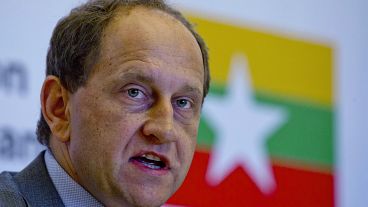By Ritvik Carvalho
LONDON (Reuters) -Britain's pound traded within recent ranges against the dollar and the euro on Wednesday as a lack of fresh economic catalysts in a sparse data calendar kept the currency in consolidation mode.
Recent movements in sterling have been dictated largely by the direction of the U.S. dollar, rather than any strong fundamental catalysts, analysts say.
"Most of the activity on Cable (sterling/dollar) recently has been a function of dollar moves," said Jane Foley, head of FX strategy at Rabobank.
By 1506 GMT, sterling was 0.2% lower against the dollar at $1.4124, some ways below a three-month high of $1.4233 hit last week.
The pound was 0.1% higher to the euro at 86.50 pence, and off a two-week low of 86.20 reached against the common currency on Tuesday.
Sterling is the second best-performing G10 currency versus the dollar this year, up 3.4% year-to-date and trailing only the commodity-linked Canadian dollar. That performance is a result of investors betting on a quicker reopening for Britain's economy on the back of its rapid COVID-19 vaccination pace.
Britain commenced the third stage of its reopening last week, allowing indoor dining in pubs and restaurants. Economic indicators such as retail sales are looking up, as are surveys of purchasing managers across industries and employment measures.
"What isn't yet priced in is certainly the possibility of BoE rate hikes," said Peter Kinsella, global head of FX strategy at UBP. "I certainly think that the improvement in the UK economy and in particular the improvement in overall employment does suggest the case for emergency style measures by the BoE is no longer warranted.
"We've already seen them start tapering...and the inevitable conclusion of that is we end up with a rate hike. And I don't think that's been sufficiently priced in by markets, certainly not as regards to the currency."
(Reporting by Ritvik CarvalhoEditing by Mark Heinrich)



